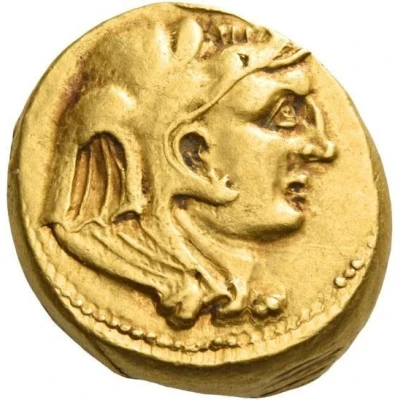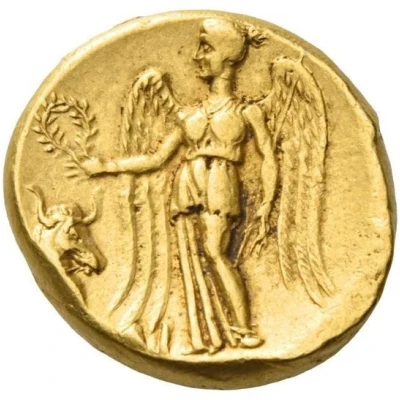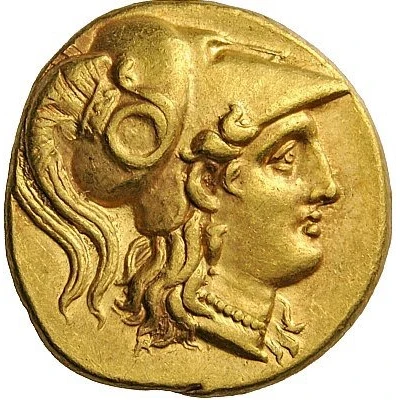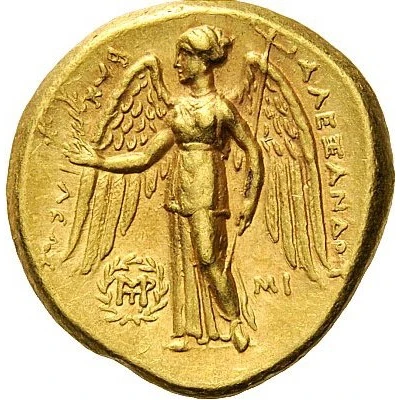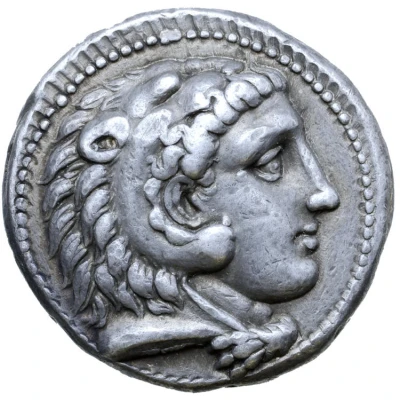
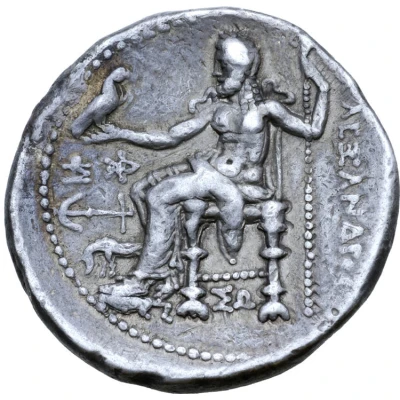

© Roma Numismatics Limited
Tetradrachm In the name of Alexander III; Ekbatana 311 BC - 295 BC
| Silver | 17.0 g | 26 mm |
| Issuer | Seleucid Empire (Seleucid Empire (305 BC - 64 BC)) |
|---|---|
| King | Seleukos I Nikator (305 BC - 281 BC) |
| Type | Standard circulation coin |
| Years | 311 BC - 295 BC |
| Value | Tetradrachm (4) |
| Currency | Drachm |
| Composition | Silver |
| Weight | 17.0 g |
| Diameter | 26 mm |
| Shape | Round (irregular) |
| Technique | Hammered |
| Orientation | Variable alignment ↺ |
| Demonetized | Yes |
| Updated | 2024-10-10 |
| Numista | N#191687 |
|---|---|
| Rarity index | 97% |
Reverse
Zeus Aëtophoros seated left, holding sceptre.
Two monograms above horizontal anchor & horse grazing left.
Script: Greek
Lettering:
ΑΛΕΞΑΝΔΡΟΥ
ΣΩ
Translation: King Alexander (III, the Great)
Interesting fact
One interesting fact about this coin is that it features the image of Alexander the Great's successor, Alexander III (also known as Alexander the Great's son), on one side, and an image of the goddess Athena on the other. This coin was used as a means of currency and exchange during the Seleucid Empire, which was a vast and powerful empire that stretched from modern-day Iran to India, and parts of Europe. The coin's design and imagery reflect the cultural and religious influences of the time, and its use of silver as a material speaks to the empire's wealth and resources.
